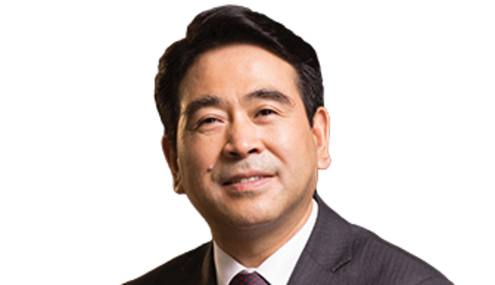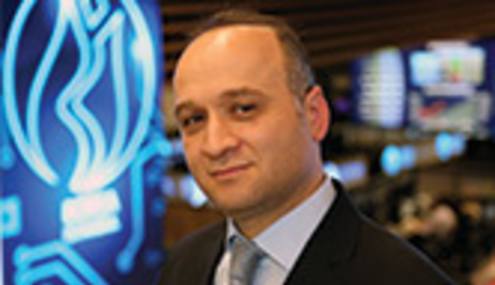Now that the momentum of global growth is firmly set in the Asia-Pacific region as Western markets continue to stutter, it is the banks that established pioneering operations in Asian markets that are best placed to service this growth and profit from it.
A case in point is Citi, which set up shop in Asia back in 1902. If the first wave of global growth involved the General Electrics, Microsofts and Apples of the world exploring Asian markets, today, it is the Samsungs and Tatas of Asia, which Citi served when they were only $1bn companies, that are scoping markets worldwide. “The question is who will be the Samsung or the Tata of tomorrow?” says Stephen Bird, Citi Asia-Pacific chief executive.
Editor's choice
Citi banks more than 3500 US foreign subsidiaries in Asia and over 8000 Asian corporates. In addition to commercial banking, having a long-standing franchise in the region means Citi is perceived as a local bank in many countries across Asia. Citi employs 60,000 mostly local people across Asia.
Unique network
“Our network is increasingly valuable because you cannot replicate it. We have well-established licensed banks in places where licences are no longer available and we have the knowledge, skills and infrastructure to support our clients. In the past 40 years or so, we have also added retail banking into our network, which gives a strong balance to our business with a combination of annuity and episodic business,” says Mr Bird.
Citi’s multi-sector Asia presence also extends to capital markets. The bank raised $150bn for Asia-Pacific clients in 2014. It was also the only financial institution involved in all key multi-billion dollar China oil and gas bond issues, including those of CNOOC, Sinopec and CNPC.
In terms of equities, Citi led 14 initial public offerings (IPOs) for Asian clients throughout the year’s submission period, including Alibaba, the world’s largest.
Selective expansion
Citi Asia accounted for 36% of the bank’s global profits in 2014. Citi has operations in 17 Asian countries, eight of which generate more than $1bn in revenues a year.
The bank’s approach to growth in Asia has been to focus on markets that can accommodate large-scale operations. When asked if Citi is considering tapping less developed countries in the Greater Mekong Delta, for instance, Mr Bird underscores Citi is in Asia to win. “We are very disciplined in putting our next investment dollar in markets where we can play to win. It has to be where we can scale up to be a meaningful presence and where we can generate scale,” he says.
Citi approaches smaller markets either by establishing a frontier presence, such as it did in Vietnam, or by organising selected capital markets transactions. Citi in fact arranged Mongolia Mining’s IPO in Hong Kong in 2010 – the first offering in Hong Kong by a Mongolian corporate.
Citi is keen to focus on markets with large potential as it supports its global standardisation process, whereby it offers end-to-end transaction processes into regional hubs to serve 60 to 70 countries. “We have service hubs in Asia that run many of our businesses globally,” says Mr Bird.
Understanding China
Mr Bird’s approach to China is to embrace the philosophy and political process behind the country’s economic and financial reform. Many market participants grew impatient with the China (Shanghai) Pilot Free Trade Zone, looking for more and faster policy change. Mr Bird, however, took a different approach.
“The general word from the market was: ‘We don’t really know what it is, it’s a blank sheet of paper, we’ll wait for it to develop.’ But our approach to China is to understand the long game. To us [the free trade zone] has the potential to be the ‘first free China’ from a trade and economic perspective, and it was important that we participated in shaping that potential,” he says.
Citi was the first global bank to set up a branch in the zone, which has helped its European clients start remitting renminbi into their global network.
Some market participants also worried about the zone’s liberal policy leaking out of Shanghai. Mr Bird saw it as inevitable and not a threat. China’s policy experimentation is necessary, in his view. “China knows that. Shadow banking is experimentation too. They need to have shadow banking and risk-based pricing before they liberalise interest rates and open the capital account. They are market pragmatists,” says Mr Bird.
Policy drives progress
Citi’s expansion in China is set to grow further, even after the country’s slowdown. “China has not had a hard landing as some were predicting. It has been able to maintain strong relative growth. It will probably be able to average about 6% growth in the next decade, which will still be double global growth. It will have contributed about half of global growth too by then,” says Mr Bird.
Citi’s new key frontier in the mainland is its credit card business. The bank initially joint ventured with Pudong Bank in the 2000s, resulting in a 4 million-users card business. Citi then became the first foreign bank to set up its own credit card business as soon as China allowed international names to do so, in September 2012. “In China, policy drives progress. You have to be there at the nascent development of policy to decide how your business can progress,” says Mr Bird.
Today, China is Citi’s fastest growing credit card business in the world. Citi’s credit card business, however, is also growing rapidly throughout Asia. It launched new credit card offerings in China, Indonesia, Philippines, Taiwan and Indonesia in 2014, generating more than 300,000 new card accounts in the region.
‘Beating heart’ Indonesia
Citi’s Indonesian operations, which are now worth $700m, are almost 50 years old. Having grown exponentially in the past decade, it is a key market in the Association of South-east Asian Nations (Asean) region. “I describe Indonesia as the beating heart of Asean,” says Mr Bird.
Having already built strong networks in neighbouring countries, Indonesia will be key in spearheading Citi’s Asean business. “Indonesia is the most populous Muslim democracy in the world with a lot of natural advantages in the heart of a trade zone that largely trades with itself. And with our network in Malaysia, Thailand, Philippines, Singapore and Vietnam, we are ready to finance intra-Asean trade,” says Mr Bird.
Though Indonesia still has enormous infrastructure shortcomings, the country's growth, combined with the policies of incumbent president Joko Widodo, could generate change. Cutting Indonesia's enormous $40bn annual fuel subsidies could help mobilise funds for infrastructure improvement, a move that Citi is looking to support.
South Korean scale-back
One of the few Asian markets where Citi has retrenched is South Korea. This country has had a turbulent 2014 among banking scandals involving alleged rate colluding and illegal loan-granting in South Korean banks’ Japanese branches.
“In 2007, the [South Korean] banking industry was earning 15% return on equity [ROE]. Last year it made 4% ROE. When considering global growth slowdown, the difficulties of being a 70% export economy in a slowing world as well as many new regulations, then you can see the industry has lots of adjustments to make in a short time,” says Mr Bird.
While Citi’s South Korean institutional business remains strong, its retail business has not been immune to these pressures. Peers Standard Chartered and HSBC have experienced similar difficulties. The former paid a $1bn write-off and the latter abandoned the market altogether.
Citi, however, restructured its operations early in line with South Korea’s current business cycle. It closed one-third of its branches, reduced 700 roles and focused branches in the richest six South Korean cities, where there is scope for face-to-face wealth management consultations. Meanwhile, it has focused on technological progress to meet South Korean customers’ particular preference for digital banking.
“We recognise business cycles. You can’t get caught like the frog in the water that’s getting hotter and hotter, you can’t just wait for the market to turn. You have to be proactive and restructure, which we have done and we are well positioned for the future in the Korean marketplace,” says Mr Bird.












